Travel
Car Shipping Industry Growth in Hawaii: Trends and Opportunities
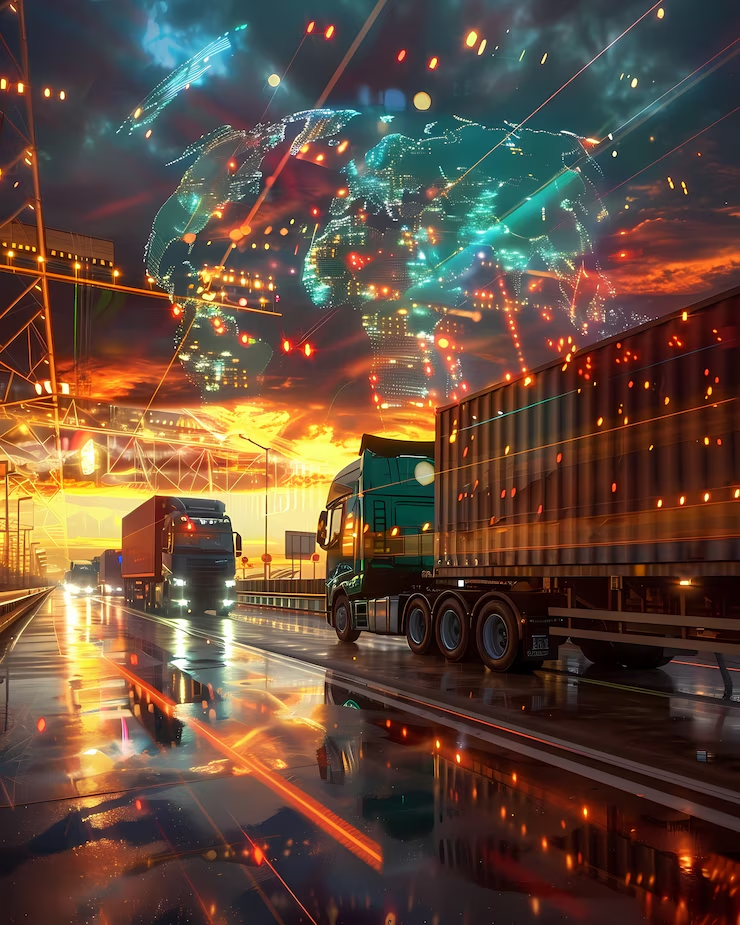
The car shipping industry in Hawaii is more than just about moving vehicles from one island to another; it’s a pivotal part of everyday life for residents and visitors who rely on their cars to explore the islands. As trends shift and the demand for car shipping grows, there are exciting developments on the horizon. Companies are not only adjusting to increased relocation numbers but also finding new ways to embrace eco-friendly technologies. In this article, we’ll dive into the factors driving this growth, explore the challenges faced by shipping companies, and highlight how these businesses are innovating to meet the evolving needs of Hawaii’s unique market. Let’s take a closer look at what’s happening in Hawaii’s car shipping scene!
The car shipping industry in Hawaii is experiencing growth due to increased interisland shipping activity, supported by companies like Young Brothers and Pasha Hawaii. Additionally, a rising demand for eco-friendly solutions and investment in renewable energy at ports are driving advancements in operational efficiency within the sector.
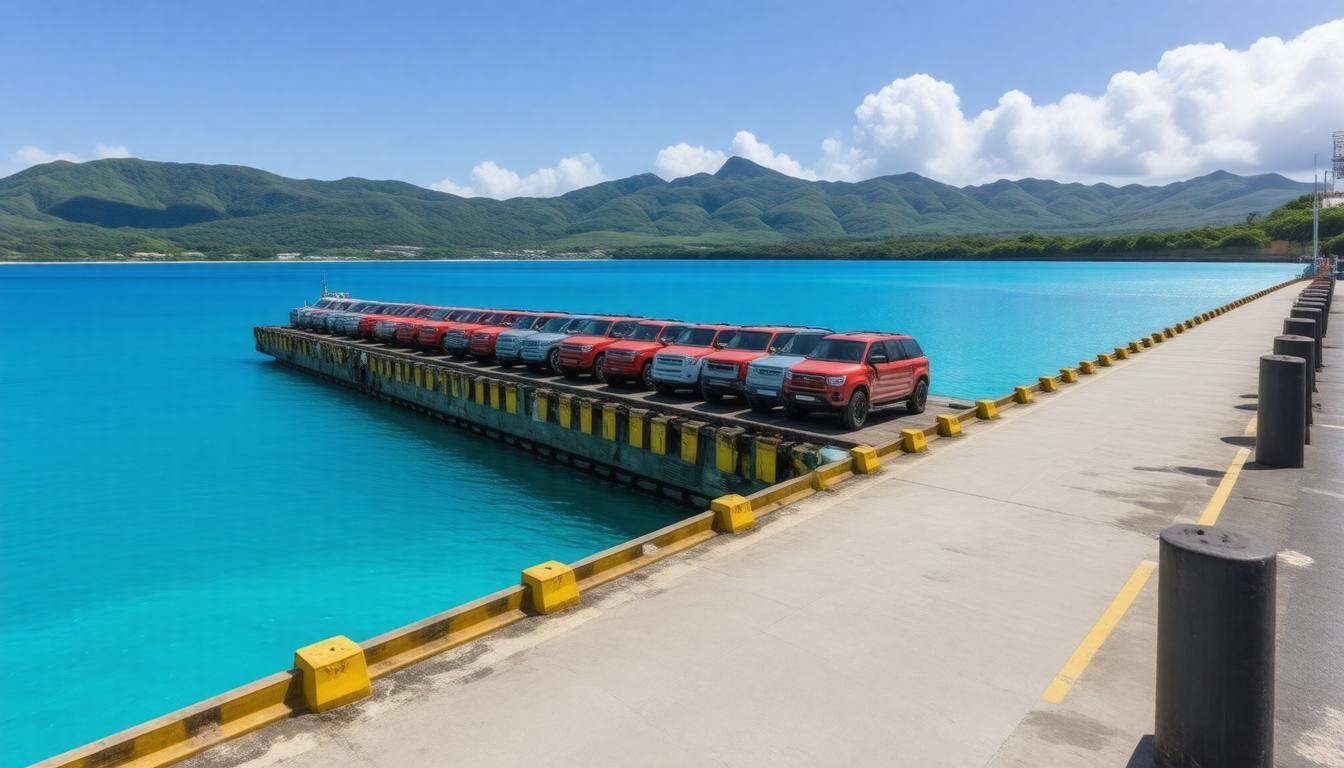
Car Shipping Industry Growth in Hawaii
The car shipping industry in Hawaii thrives despite occasional fluctuations in the global economy, largely due to several key factors that influence demand. One of the most significant trends has been the increased number of relocations to the islands. Many people are drawn to Hawaii for its unique lifestyle, stunning landscapes, and vibrant culture. As more individuals and families make the move to this paradise, the need for vehicle transportation has grown correspondingly. In fact, cars represent one of the most critical imports after petroleum, underscoring their importance in daily life on the islands.
While it may seem like a simple matter of shipping cars from point A to B, much more intricate logistics are involved. The complex nature of keeping supply chains intact ensures that once a vehicle arrives at Hawaiian ports, it is swiftly transferred to its final destination without delay. This can mean navigating various local regulations and ensuring compliance with environmental standards—all while upholding customer satisfaction. Fortunately, companies in this sector have adopted modern shipping technologies that streamline the process and offer improved efficiency.
Not only is there an increase in relocations, but tourism remains a fundamental component driving the growth of Hawaii’s car shipping industry. Visitors frequently rent vehicles to explore diverse attractions across the islands. This consistent influx reinforces demand for reliable transportation options and spurs discussions around sustainability initiatives aimed at reducing emissions from conventional vehicles.
For example, businesses like Pasha have made investments in eco-friendly technology such as natural-gas-powered vessels that are leading the charge toward sustainable shipping practices.
“Significant investments are being made toward eco-friendly technology…to reduce emissions,” emphasizes George Pasha IV, CEO of Pasha Hawaii.
Still, challenges persist within this rapidly evolving landscape. Economic factors such as inflation and rising interest rates can affect discretionary spending and impact consumer choices regarding vehicle imports. Companies like Matson have reported lower volumes in container shipping compared to previous pandemic spikes, warning about potential uncertainties ahead. Thus, market participants must remain vigilant and adaptable.
To capitalize on promising prospects within this growing sector, stakeholders should consider engaging with local communities to build relationships rooted in trust and transparency while promoting sustainable practices. Strategies that prioritize environmentally friendly operations not only align with today’s consumer preferences but also pave the way for future advancements.
The outlook for Hawaii’s car shipping industry indicates ongoing growth opportunities stemming from shifts in population dynamics and continued investment in sustainability initiatives.
As we continue exploring this sector’s landscape, it’s essential to understand what forces are propelling these developments forward and how they will shape future operations.
Drivers of Expansion
One of the most significant drivers is the increase in relocations. Hawaii’s stunning landscapes and relaxed lifestyle make it a prime spot for individuals and families seeking a fresh start. As more people move to the islands, the demand for car shipping services skyrockets. Rather than buying new vehicles locally—often at inflated prices—new residents tend to prefer bringing their own cars from the mainland. This not only saves money but also allows them to maintain some sense of familiarity as they transition to island living.
It’s fascinating to see how this trend reflects a common sentiment: moving can be both exciting and daunting, so having your reliable vehicle adds a sense of comfort during such a significant change.
Yet, it’s not just relocation that fuels this industry; advancements in shipping technology play a vital role as well.
Advancements in Shipping Technology
The evolution of shipping methods has transformed the way vehicles are transported. Innovations like natural-gas-powered containerships, such as Pasha Hawaii’s MV George III, exemplify how technology is paving the way for environmentally friendly practices in an industry that once relied heavily on fossil fuels. These state-of-the-art vessels not only reduce emissions but also improve fuel efficiency, leading to lower operational costs.
This shift in technology resonates with a growing consciousness about environmental sustainability. Customers increasingly appreciate knowing that they are actively choosing services that minimize their carbon footprint while benefiting from improved service speed and reliability.
The strategic incorporation of Internet of Things (IoT) technologies further enhances operational efficiency. These smart devices facilitate real-time tracking of vehicles throughout the shipping process—a feature increasingly demanded by consumers who want assurance regarding their car’s safety and status during transit. As a result, transport companies can optimize routes, reducing fuel consumption and ensuring timely deliveries.
In essence, the marriage between advanced technology and customer preferences creates an environment ripe for innovation in the car shipping industry.
Furthermore, as these technological advancements take hold, regulatory compliance becomes just as essential for maintaining operational success.
Compliance with Regulations
Ongoing compliance with evolving regulations around driving hours, safety procedures, and reporting standards adds another layer of complexity to the industry. Transport companies must navigate these regulations carefully; failure to do so could result in costly fines or disruptions in service. Thus, companies prioritize staying informed about regulatory changes while establishing systems that ensure adherence without compromising efficiency.
The interplay between adhering to regulations while adopting new technologies presents both challenges and opportunities for growth. For instance, Transportation Management Systems (TMS) streamline logistics by providing comprehensive tracking solutions that help firms meet regulatory demands without excess overhead.
Understanding both consumer behavior and technological innovations is crucial for those looking to succeed in this expanding market. Keeping pace with these drivers of expansion will enable businesses not only to survive but thrive amidst future challenges in Hawaii’s vibrant car shipping landscape.
With these insights into the shifting dynamics of car shipping, we can now explore some of the leading players that shape this competitive landscape.
Top Car Shipping Companies
Several notable companies play a pivotal role in Hawaii’s car shipping industry, each with its unique strengths and contributions. One standout player is Pasha Hawaii, founded by the Pasha family, which specializes in local service with a focus on environmental sustainability. They have recently taken a significant step toward greener shipping solutions with the launch of the MV George III, a natural-gas-powered containership that underscores their commitment to innovation and eco-friendly practices. This positions Pasha Hawaii not just as a leader in logistics but also as a champion of environmental responsibility, demonstrating how modern technology can serve traditional industries.
Young Brothers
Another key player is Young Brothers, boasting an impressive 120 years of experience in interisland shipping. With 12 weekly sailings across multiple Hawaiian ports, they ensure reliable transport services while also providing vital support to more than 85 local farmers. Their commitment to serving the community reflects their integral role in Hawaii’s economic landscape. By facilitating the movement of goods between islands, Young Brothers contributes significantly to local agriculture and sustains the livelihoods of many residents who rely on these shipping routes.
While other companies may approach market strategies differently, it’s crucial to recognize that all these entities are adapting to shifting economic conditions.
Matson
Lastly, we turn our attention to Matson, a company that links its economic growth projections closely to the booming tourism industry in Hawaii. Despite its enduring significance within the sector, Matson faces challenges due to weakening economic conditions. They anticipate a potential retraction in shipping volumes, emphasizing the necessity for strategic planning in response to fluctuating markets. As they navigate these choppy waters, Matson showcases adaptability while finding new efficiencies, ensuring their ongoing relevance despite external factors influencing operations.
Understanding how these companies operate provides valuable insight into the wider dynamics shaping the car shipping market in Hawaii.
Together, these companies highlight the multi-faceted nature of car shipping services available in Hawaii. Each brings different experiences, approaches, and philosophies toward transportation. For anyone looking to engage in these services—whether for personal use or business—it’s important to consider not only pricing but also reliability, timeliness, and commitment to community. The diverse capabilities of companies like Pasha Hawaii, Young Brothers, and Matson ensure efficient vehicle transportation while maintaining safety standards amidst Hawaii’s unique geographical landscape.
With these foundational insights into industry players established, we can now explore the broader implications that arise from their operational strategies.
Economic Effects
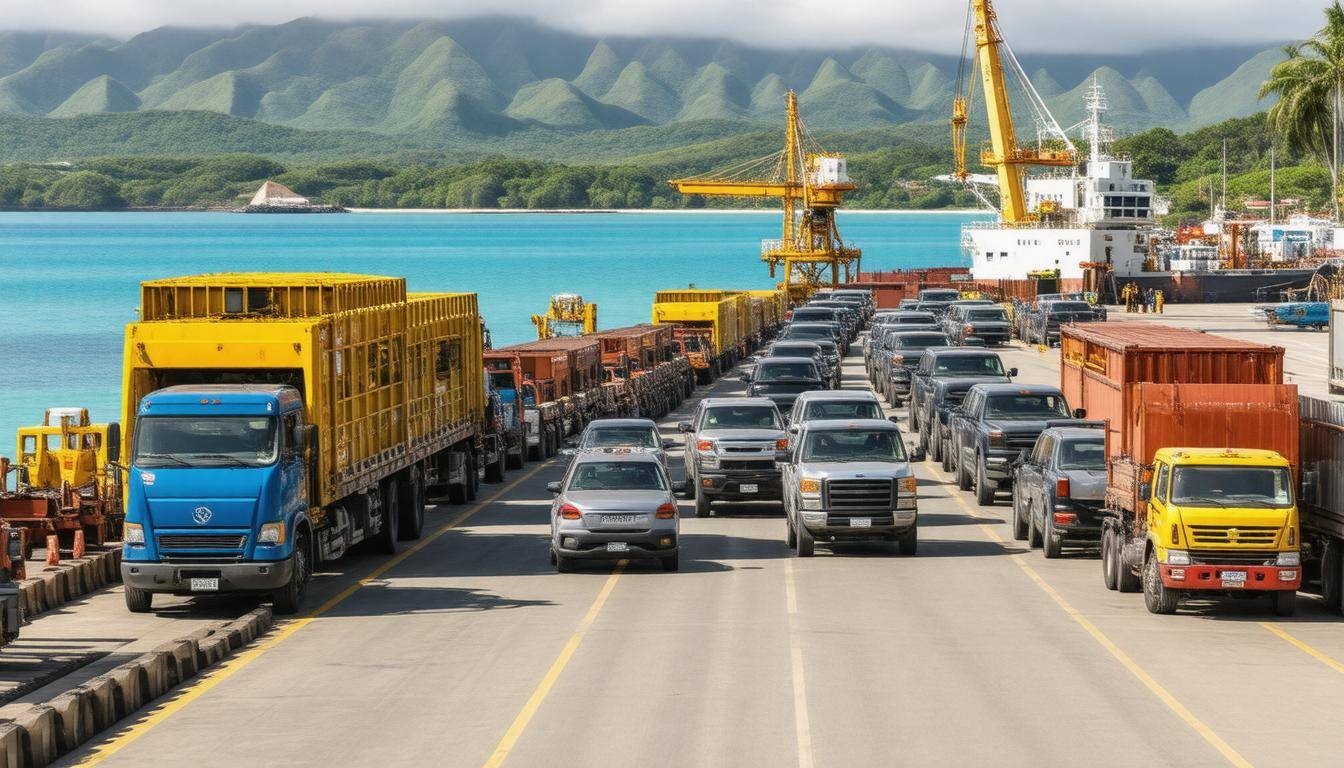
The growth of the car shipping industry in Hawaii has extended its influence far beyond just transporting vehicles. It acts as a crucial pillar for the local economy, generating substantial revenue while creating essential jobs and supporting various auxiliary businesses like dealerships and auto repair shops.
When you consider the fact that Hawaii is ranked 49th among U.S. states for imports, primarily reliant on petroleum and cars, it’s evident that this industry plays an integral role in maintaining the flow of goods that residents rely on daily.
It’s not merely about statistics and numbers; each shipment creates a domino effect that uplifts various sectors. From transportation to retail, the infusion of imported vehicles enriches consumer choices and drives competition, benefiting consumers. Local car dealerships thrive as they sell a steady supply of these imported cars, while mechanic shops see increased business as more vehicles require services.
Notably, local economic data reveals that robust activities within the car shipping sector support more than 450 direct and indirect jobs, illustrating how interconnected our economy truly is.
| Economic Effects | Impact Level |
| Revenue Generation | High |
| Job Creation | Moderate |
| Support to Ancillary Businesses | High |
Moreover, this industry’s ripple effect encourages ancillary businesses to thrive. Consider the mechanics who service these imports; they not only fix cars but are also integral in keeping transportation affordable and sustainable in Hawaii, where public transport options can be limited—especially on the islands with expansive landscapes and diverse terrains.
While these benefits highlight a thriving sector, it’s essential to recognize the challenges that could impact operations within this industry moving forward.
Infrastructure and Logistic Challenges
Despite the growth of the car shipping industry in Hawaii, infrastructure and logistical hurdles present significant barriers to progress. One glaring example is the Kapalama Container Terminal project, intended to bolster shipping capacity. While the enhancements promise to improve operational efficiency, integrating low-emission technologies remains a slow endeavor. The reality is that retrofitting older structures to align with newer environmental regulations is time-consuming and financially burdensome.
Adapting infrastructure can often feel akin to trying to fit a square peg in a round hole; it requires innovative approaches and creative engineering solutions.
This misalignment creates a domino effect throughout the entire shipping process. For instance, delays in upgrading terminals lead to inefficiencies that echo across multiple platforms: from increased shipping times for consumers to elevated costs for transport companies forced to adapt to suboptimal conditions. When shipment schedules are thrown off balance, it affects not just the car buyers waiting for their vehicles but also the broader economic dynamics at play.
In addition to infrastructural issues, logistical challenges compound the difficulties faced by the industry. Hawaii experiences unpredictable weather patterns that can wreak havoc on shipping timelines. Storms or heavy rain can lead to port closures, causing potential backups that ripple through an already stretched supply chain. Limited docking spaces add another layer of complexity; when there are insufficient berths for incoming vessels, shipping companies may face extended wait times—resulting in additional costs and lost opportunities.
Navigating these hurdles requires forward-thinking strategies and innovative solutions. Companies are increasingly looking toward modern technology solutions such as automated systems for better scheduling and predictive analytics for improving delivery timelines. By making data-driven decisions, shippers can enhance efficiency and mitigate risks associated with unpredictable weather or infrastructure delays. Embracing technology will be pivotal in overcoming logistical failures while effectively meeting consumer demands.
As we consider these obstacles, it’s essential to recognize the emerging prospects within the industry that invite stakeholders to rethink conventional methods and pursue fresh avenues for growth.
Emerging Opportunities
Multiple growth avenues are emerging within Hawaii’s car shipping industry, driven by a combination of infrastructure enhancements, technological advancements, and shifting consumer demands.
One of the primary areas for growth lies in infrastructure improvements. Significant investments in this sector not only elevate the level of service provided but also open up numerous doors for companies involved in terminal development and logistics management. For example, with the Hawaiian Department of Transportation receiving $47.3 million for eco-friendly technology at ports, businesses can align themselves with this initiative to ensure a more efficient and sustainable operation in the future.
This investment signals a commitment to sustainable practices, demonstrating that the industry is not just about profit, but about protecting the delicate environment of the islands while enhancing operational capabilities.
Moreover, as these infrastructure advancements unfold, companies should also pay close attention to technological advancements that are revolutionizing car shipping operations.
Technological Advancements
Modern booking and tracking systems are becoming essential tools for enhancing service efficiency and customer satisfaction. By adopting these modern technologies, businesses can enable real-time tracking for shipments, which is increasingly becoming a standard expectation among consumers today. This means that clients can stay informed about their vehicle’s location throughout the shipping process, fostering a sense of trust and transparency.
When customers feel confident in knowing where their car is at any given moment, their overall experience improves considerably.
| Opportunity | Description |
| Investment in eco-friendly technology | Utilize renewable resources and improve efficiency at terminals. |
| Real-time tracking systems | Offer customers up-to-date information on their vehicle’s status. |
| Renewable energy solutions | Integrate solar and wind power into logistics to reduce emissions. |
Additionally, these advancements directly correlate with an increasing demand for renewable energy solutions within the supply chain.
Implementing green initiatives is not merely a trend; it has become an expectation from environmentally conscious consumers. Companies like Young Brothers are leading by example, investing heavily in sustainability with projects slated to enhance their fleet capabilities while reducing ecological footprints.
In doing so, they position themselves not just as service providers but as responsible members of the community who prioritize both customer satisfaction and environmental health.
Recognizing these evolving trends allows companies to adapt effectively. As they improve infrastructure, embrace technology, and commit to sustainability, they will be strategically prepared for what lies ahead in this dynamic industry.
Anticipating shifts within this market landscape reveals potential developments that could redefine operations and strategies moving forward.
Future Predictions
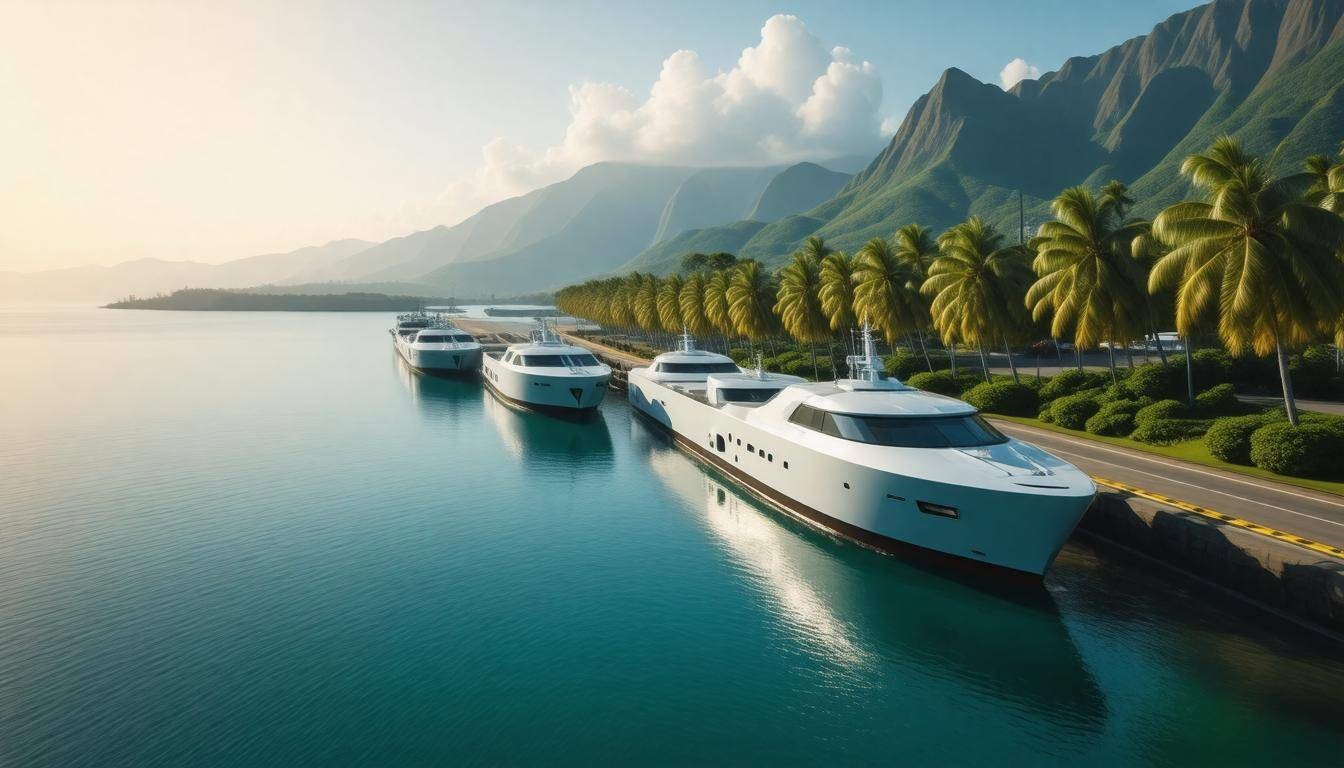
The car shipping industry in Hawaii stands at a pivotal juncture as it gears up for notable expansion. Experts forecast that infrastructure enhancements, such as the improvement of ports and local transport networks, coupled with rapid technological advancements, will not only propel growth but also set new benchmarks in service efficiency.
One key development to watch is the arrival of Pasha Hawaii’s MV Janet Marie, a vessel expected to transform shipping logistics and fuel competition among providers. With its modern design optimized for cargo efficiency, this new addition to the fleet symbolizes a pressing commitment to serve Hawaii’s unique geography more effectively.
As we consider these developments, it’s crucial to discuss how demographic changes are influencing demand.
With Hawaii continuing to attract new residents and tourists alike, there’s no doubt that the demand for car shipping services is on the rise. The influx of fresh faces typically leads to a corresponding increase in vehicle registrations; after all, relocating families and new visitors often require reliable means of transportation.
This growing demand presents an invaluable opportunity for companies in the sector. However, it is essential for them to adapt proactively to emerging technologies and logistical hurdles if they aim to maintain their competitive edge. Companies that harness innovations such as AI-driven route optimization or IoT applications for real-time tracking are likely to see significant advantages over those who resist change.
To further illustrate the potential market dynamics, it’s important to note that the global car transportation market is projected to reach $1.0052 billion by 2027. This substantial anticipated growth confirms that the industry is not just stabilizing but actively expanding, presenting numerous opportunities for new entrants willing to innovate.
On top of external growth factors, internal industry standards are shifting as well. As regulatory compliance continues to evolve—particularly concerning environmental mandates—businesses are compelled to rethink their practices to align with new requirements.
Those forward-thinking companies that integrate electric and autonomous transport vehicles into their fleets stand to benefit not only from potentially reduced emissions but enhanced operational safety as well.
In everything from regular operational procedures to technological integration, the adaptability of businesses will ultimately determine who thrives in this developing landscape. The future holds both challenges and rewards; thus, aligning with industry trends while maintaining a focus on customer service will be essential.
For stakeholders across the board, embracing these changes now could mean the difference between being left behind or leading the market tomorrow.
As Hawaii’s car shipping industry evolves, proactive adaptation and innovative strategies will unlock unprecedented opportunities for growth and success.
Travel
Tarnplanen: The Complete Guide to Durable Tarpaulins

Tarnplanen, also known as tarpaulins, are versatile covers designed to protect goods, equipment, and outdoor spaces from environmental factors. They are widely used in construction, agriculture, transport, and even in daily household activities. Made from materials such as polyethylene, PVC, or canvas, these sheets offer excellent protection against rain, sun, dust, and wind. Over the years, tarnplanen have become an essential tool for individuals and industries alike, offering cost-effective and reliable solutions for covering and securing items.
The Origin and Evolution of Tarnplanen
The concept of protective covers dates back centuries when people used animal hides and woven fabrics to safeguard their belongings. With the advancement of synthetic materials in the 20th century, tarpaulins evolved into durable and weather-resistant sheets. Today’s tarnplanen combine modern technology, reinforced edges, and UV-resistant coatings, making them far more advanced than their early counterparts. This evolution has transformed them from simple covers to specialized tools for industries and personal use.
Materials Used in Tarnplanen
The quality and performance of a tarpaulin largely depend on its material. Polyethylene tarpaulins are lightweight, waterproof, and affordable, making them perfect for general use. PVC tarpaulins are heavier, stronger, and often used in industrial and transport settings due to their durability. Canvas tarpaulins, while traditional, remain popular because they are breathable and ideal for covering equipment that requires air circulation. Each material type has its strengths, and choosing the right one depends on the intended purpose.
Common Sizes and Thickness
Tarnplanen are available in a wide range of sizes and thickness levels. Smaller sheets may be used for domestic purposes like covering furniture, while larger ones are essential for construction sites and trucks. Thickness is often measured in grams per square meter (gsm), with heavier tarps offering better durability and resistance to harsh conditions. A 90 gsm tarp might suffice for lightweight use, while heavy-duty 200 gsm or higher versions are designed for industrial-grade applications.
Waterproofing and Weather Resistance
One of the biggest advantages of tarnplanen is their ability to withstand different weather conditions. Waterproof coatings and sealed seams ensure that rainwater does not penetrate the material. UV protection prevents the fabric from degrading under prolonged sunlight exposure. Additionally, tarnplanen are designed to resist mold and mildew, which is crucial for long-term use in damp environments. This level of weather resistance makes them indispensable in outdoor projects.
Industrial Uses of Tarnplanen
Industries rely heavily on tarnplanen for multiple applications. In construction, they serve as temporary roofs, protect building materials, and cover scaffolding. In logistics, trucks use heavy-duty tarpaulins to shield goods during transportation. Agriculture benefits from them as crop covers, greenhouse linings, or protection for stored hay. Even in mining and marine industries, specialized tarpaulins provide durable solutions to protect equipment and raw materials.
Household Applications of Tarnplanen
Beyond industrial purposes, tarnplanen are highly practical in everyday life. Homeowners use them to cover outdoor furniture, protect cars, or provide shade in gardens. They are also helpful during renovations to safeguard floors and furniture from dust and paint. Campers and outdoor enthusiasts rely on them as ground covers, makeshift shelters, or rain protection while traveling. Their versatility makes them a must-have item in every household.
Tarnplanen for Emergency Situations
During natural disasters like floods, hurricanes, or earthquakes, tarnplanen become lifesaving tools. They are used as temporary shelters, roof replacements, or to protect supplies from getting wet. Relief organizations stockpile tarpaulins to distribute quickly in affected areas. Their portability and ease of setup make them ideal for emergency response, providing immediate relief when permanent solutions are not available.
Tarnplanen in Transport and Logistics
The transport industry uses heavy-duty tarpaulins extensively to protect goods during transit. Trucks, trailers, and cargo ships often rely on these covers to ensure products remain intact against weather and dust. In many regions, laws require cargo to be secured with proper covers to avoid accidents. Tarnplanen, with their reinforced grommets and ropes, ensure that loads are tightly secured, reducing risks during long hauls.
Maintenance and Care for Tarnplanen
Like any tool, tarnplanen last longer when properly maintained. Regular cleaning with mild soap and water prevents dirt buildup and mold growth. It is important to store them in dry, shaded areas when not in use. Avoiding sharp objects and handling them carefully also prolongs their lifespan. With the right care, even a frequently used tarpaulin can last for several years.
Cost and Affordability
Tarnplanen are known for being cost-effective solutions. Their affordability makes them accessible to both individuals and large businesses. While higher-quality tarps may come at a greater initial cost, their durability ensures long-term savings by reducing replacement frequency. This balance of price and performance is one of the reasons tarnplanen are popular across industries.
Eco-Friendly Tarnplanen Options
With growing environmental awareness, manufacturers now offer eco-friendly tarpaulins made from recyclable and biodegradable materials. These alternatives reduce environmental impact without compromising on quality. Some eco-friendly versions are designed with reduced chemical coatings and sustainable production processes. Choosing such options helps consumers and industries align with sustainable practices.
How to Choose the Right Tarnplanen
Selecting the right tarpaulin depends on purpose, size, and durability needs. For household use, lightweight polyethylene versions are sufficient, while industrial users may require heavy-duty PVC sheets. Factors like UV resistance, waterproofing, and reinforced edges should also influence the decision. Understanding specific requirements ensures maximum efficiency and long-term satisfaction with the product.
Tarnplanen in Outdoor Events
Event organizers often use tarpaulins for stages, temporary seating areas, and equipment protection. Festivals, exhibitions, and sports events rely on them to create makeshift shelters and shade areas. Their quick installation and adaptability make them ideal for short-term outdoor events. Tarnplanen ensure that weather conditions do not disrupt activities, keeping events running smoothly.
Advantages of Using Tarnplanen
The key benefits of tarnplanen include versatility, durability, affordability, and ease of use. They are lightweight yet strong, easy to transport, and quick to set up. Their wide range of applications—from household tasks to industrial uses—makes them invaluable. Above all, they offer reliable protection against weather and environmental factors, making them one of the most practical investments available.
Challenges and Limitations
Despite their many advantages, tarnplanen are not without limitations. Lightweight versions may tear easily if exposed to sharp edges or strong winds. Prolonged exposure to harsh sunlight can weaken lower-quality tarps. Additionally, improper installation may cause water pooling, which can damage the material over time. Recognizing these limitations helps users make better purchasing decisions.
Innovations in Tarnplanen Technology
Modern technology has introduced advanced features in tarpaulin manufacturing. Flame-retardant coatings, anti-fungal treatments, and heat-sealed seams are now common in premium versions. Smart tarpaulins embedded with sensors are even being tested for logistics to monitor temperature and humidity levels. These innovations promise to enhance performance and expand the role of tarnplanen in future industries.
Conclusion
Tarnplanen have proven themselves as reliable, versatile, and essential tools across multiple industries and households. From protecting goods in transit to offering shelter in emergencies, their importance cannot be overstated. With proper selection, care, and maintenance, they can serve as long-lasting solutions for a wide range of needs. As technology advances, the future of tarnplanen looks even more promising, blending practicality with innovation.
FAQs
- What is the most durable material for tarnplanen?
PVC tarpaulins are considered the most durable due to their thickness, strength, and resistance to harsh weather conditions. - Can tarnplanen be recycled?
Yes, many modern tarnplanen are recyclable, and eco-friendly versions are made with sustainable materials to reduce environmental impact. - How long does a tarpaulin usually last?
With proper care, a high-quality tarpaulin can last several years, depending on usage and exposure to environmental factors. - Are tarnplanen suitable for camping?
Absolutely. They are often used as ground covers, rain shelters, and protective layers for camping gear. - What size tarpaulin should I buy?
The size depends on your intended use. For small household tasks, compact tarps work well, while industrial or transport needs require larger, heavy-duty versions.
Travel
Veneajelu: Discover the Joy of a Relaxing Boat Ride
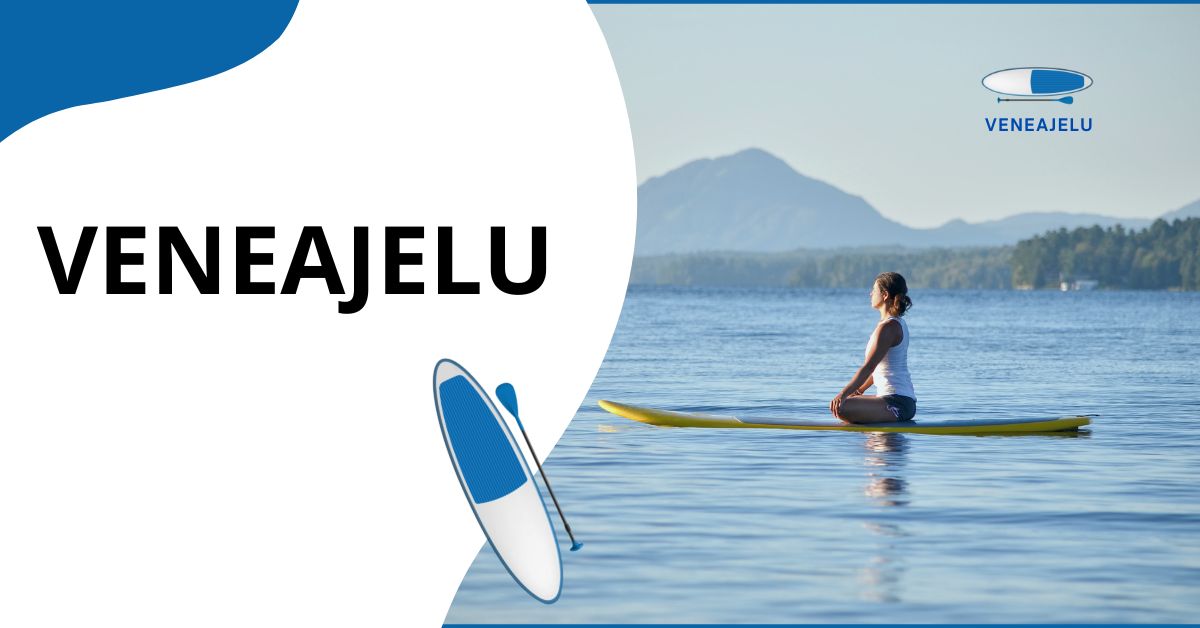
The Finnish word veneajelu translates to “boat ride” in English. In Finland and other countries with strong connections to water, a veneajelu is more than just a ride—it’s an experience of relaxation, freedom, and nature. Whether on a lake, river, or coastal waters, taking a boat ride provides an escape from daily life and a chance to connect with the natural world.
The Meaning Behind Veneajelu
At its core, veneajelu is about enjoying time on the water, usually in a simple and leisurely manner. Unlike fishing trips or professional sailing, it emphasizes relaxation, sightseeing, and spending quality time with friends or family.
Cultural Importance of Veneajelu in Finland
In Finland, where lakes are abundant and summers are short yet beautiful, veneajelu is a cherished tradition. Families often take evening boat rides during summer holidays, enjoying the midnight sun, calm waters, and peaceful landscapes.
Why People Love Boat Rides
People are drawn to veneajelu because it combines tranquility with adventure. The gentle rocking of the boat, the fresh air, and the open water create a unique sense of freedom. It’s a reminder of how simple pleasures can bring immense joy.
Types of Boats Used in Veneajelu
Veneajelu can be enjoyed with various types of boats: small wooden rowboats, motorboats, sailboats, or even canoes. The choice depends on personal preference, location, and the kind of experience one is seeking.
Veneajelu as a Family Activity
Boat rides are often family-friendly, allowing children and adults to spend time together outdoors. Parents introduce their kids to nature, teaching them respect for water and safety while creating lasting memories.
Romantic Veneajelu Experiences
For couples, a veneajelu can be an intimate and romantic outing. A sunset ride on a calm lake or a moonlit journey along the coast creates the perfect atmosphere for meaningful moments.
Adventure and Exploration
While many see veneajelu as peaceful, it can also be adventurous. Exploring hidden islands, secluded beaches, or riverside villages gives a sense of discovery and excitement.
Health Benefits of Boat Rides
Spending time on the water reduces stress, improves mood, and encourages mindfulness. The physical activity of rowing or sailing can also provide light exercise, making veneajelu good for both the body and mind.
Seasonal Appeal of Veneajelu
Summer is the most popular season for veneajelu in Finland, with long days and warm weather. However, autumn boat rides bring beautiful foliage, while spring rides celebrate the awakening of nature. Winter, on the other hand, freezes lakes, making boat rides impossible but building anticipation for summer.
Safety Tips for Veneajelu
Safety is a key part of any boat ride. Wearing life jackets, checking the weather forecast, and avoiding overcrowding are simple measures that ensure a pleasant experience. Responsible boating helps prevent accidents and protects everyone on board.
Veneajelu in Tourism
Tourists visiting Finland or other lake-rich regions often look forward to a veneajelu experience. Many resorts, hotels, and cabins offer boat rentals, guided tours, or traditional rowboat rides, making it accessible to visitors.
Eco-Friendly Veneajelu
With growing environmental awareness, eco-friendly boating is becoming important. Using electric boats, minimizing fuel use, and respecting wildlife habitats help preserve natural waterways for future generations.
Memories and Traditions
For many Finns, veneajelu brings back childhood memories of family holidays, fishing trips, and summer nights on the water. It is not just an activity but a tradition that strengthens family bonds and cultural identity.
Conclusion
Veneajelu is more than just a boat ride—it is an experience that blends relaxation, culture, and nature. Whether enjoyed with family, friends, or alone, it offers peace, adventure, and a deep connection to the water. Its cultural roots and timeless appeal make it a cherished part of life, especially in Finland, where lakes and waterways define the landscape.
FAQs
- What does veneajelu mean?
Veneajelu is the Finnish word for “boat ride.” - Where is veneajelu most common?
It is most common in Finland and other regions with many lakes and rivers. - Can tourists enjoy veneajelu?
Yes, many tourist destinations in Finland offer boat rentals or guided rides. - What boats are used for venea’jelu?
Rowboats, motorboats, sailboats, and canoes are all common choices. - Is veneajelu safe for children?
Yes, it is safe when proper precautions like life jackets are used.
Travel
How to Avoid Tourist Crowds in Photos at Popular Places in Rome

Rome, Italy, is a dream destination for many travelers. The city is home to some of the most iconic landmarks in the world, such as the Colosseum, the Roman Forum, and the Vatican. While these sites are undeniably stunning, they can also be overcrowded, especially during peak tourist seasons. As a Rome Italy photographer, capturing the beauty of the Eternal City without the hustle and bustle of large crowds can be challenging. However, with a few expert techniques and the right planning, it is entirely possible to take stunning, crowd-free photos at some of Rome’s most popular locations.
In this guide, we’ll share insider tips on how to avoid tourist crowds and photograph Rome’s most famous landmarks in all their glory. Whether you’re a seasoned photographer or an enthusiastic traveler with a camera, these strategies will help you capture Rome in its most serene form.
Timing is Everything
The key to avoiding crowds in Rome is timing. Popular tourist sites tend to be packed during certain hours of the day, especially around midday when most tourists arrive. To avoid these crowds and ensure the best possible lighting for your photos, you’ll need to plan your visit around the optimal times.
Early Morning Magic
One of the most effective ways to get a crowd-free shot is by getting up early. The early hours of the morning, right after sunrise, are the best time to capture iconic locations like the Colosseum, Trevi Fountain, and the Spanish Steps.
Why early mornings?
- The light is softer and more flattering, which makes for better photographs.
- Tourist crowds are sparse, allowing you to take clean shots without distractions.
- The air is cooler, and the city is quieter, giving you a more peaceful experience.
Arriving at these sites right when they open, or even a little before, will give you an exclusive opportunity to capture these locations at their best.
Golden Hour
Golden hour—the period just after sunrise or before sunset—offers some of the most beautiful natural light for photography. The light is warm and diffused, and it creates a magical atmosphere that makes for stunning photos. During golden hour, many of Rome’s most famous landmarks, such as the Pantheon and St. Peter’s Basilica, are bathed in beautiful light.
To make the most of golden hour:
- Research sunrise and sunset times in advance.
- Be ready to shoot about 30 minutes before and after the official sunrise or sunset time.
- Choose your location carefully to ensure the best angle for the light.
By planning your shoots during golden hour, you’ll avoid the harsh midday sunlight while also avoiding the crowds that usually appear later in the day.
Night Photography
While the morning may be the best time for some places, nighttime can also offer a unique opportunity to photograph Rome’s landmarks without large crowds. At night, many tourist attractions are illuminated, creating a different ambiance than what you would find during the day.
Places like the Trevi Fountain or the Colosseum are beautifully lit after dark, providing dramatic and atmospheric photos. Furthermore, these sites tend to be much quieter at night, giving you the space to capture long exposure shots without the interference of tourists.
Choosing the Right Location
In addition to timing, choosing the right spots for your photos can help you avoid large crowds. Many of Rome’s landmarks are extremely popular, so planning your itinerary wisely can make a significant difference in your ability to capture photos without distractions.
Lesser-Known Gems
While the Colosseum and the Vatican are obvious choices for photography, they can also be the most crowded. Fortunately, Rome is full of hidden gems that are just as beautiful but tend to attract fewer visitors. Consider exploring off-the-beaten-path locations such as:
- Villa Borghese Gardens: A peaceful park offering scenic views of Rome with fewer tourists.
- Gianicolo Hill (Janiculum Hill): For breathtaking panoramic views of the city, away from the usual crowds.
- Aventine Hill: A charming neighborhood with less foot traffic and beautiful views of the city, including the iconic keyhole view of St. Peter’s Basilica.
These lesser-known locations provide a more tranquil setting and can still offer spectacular photo opportunities.
Unique Angles and Perspectives
Instead of taking the traditional shot from the main entrance of a landmark, consider shooting from a different angle. For example:
- Capture the Colosseum from the rear, where fewer tourists gather.
- Photograph the Trevi Fountain from a side angle, which often results in more artistic shots.
- Use narrow alleyways and side streets to frame landmarks from a unique perspective.
By thinking creatively and exploring unconventional angles, you can capture images that stand out and avoid the typical tourist-filled shots.
Using the Right Gear
Having the right gear can help you make the most of your time and avoid distractions during a photo shoot. While it’s possible to take great photos with a smartphone, professional photographers often prefer using DSLR or mirrorless cameras for greater flexibility and image quality.
Essential Equipment for Crowd-Free Photography
- Wide-angle lens: A wide lens is perfect for capturing large landmarks or scenic views without the need to step back into crowded areas.
- Tripod: Especially useful for capturing long exposure shots during golden hour or at night.
- Remote shutter release: A useful tool for avoiding camera shake when photographing without a tripod.
By bringing the right equipment, you can quickly set up your shots and ensure high-quality images without the need to linger in crowded areas.
Working with a Professional Photographer
Sometimes, it’s worth hiring a professional photographer to help you capture the perfect shot in Rome. A professional photographer, such as “Mike Kire,” has extensive experience in dealing with crowded locations and knows the best times, angles, and techniques to avoid tourists in the frame.
A professional can:
- Help you plan your shoot efficiently, ensuring you visit the most photogenic sites during the least crowded times.
- Offer creative insights into framing and composition.
- Take the pressure off you so you can enjoy the experience and focus on capturing memories, rather than stressing about the crowds.
Practical Tips for Avoiding Crowds in Rome Photos
To further help you, here are some practical tips for avoiding crowds during your photography sessions in Rome:
- Research Opening Hours: Many sites open early or close late, offering times when crowds are fewer.
- Avoid Major Holidays: Roman holidays like Christmas, Easter, and Ferragosto bring in thousands of tourists, so plan your visit around these times.
- Use Local Knowledge: Ask locals for tips on hidden gems and less crowded times to visit popular spots.
- Plan Your Day Strategically: Start with less popular spots early in the morning, then visit crowded places later in the day when tourist traffic has subsided.
- Go Off-Season: Visiting Rome during the shoulder seasons—spring or autumn—often means fewer tourists.
Rome is undoubtedly one of the most photographed cities in the world, and with the right approach, it’s possible to capture its beauty without the crowds. By planning your shoots around the best times of day, choosing off-the-beaten-path locations, and thinking creatively about your compositions, you can create stunning images that showcase the timeless beauty of Rome.
Whether you’re a professional photographer or simply an avid traveler with a passion for photography, these strategies will help you capture Rome at its finest. And if you ever need expert assistance, a professional photographer like Mike Kire can guide you in making the most of your photography adventure in the Eternal City.
With these tips in mind, you’ll be able to avoid the tourist crowds and capture the essence of Rome in all its glory, ensuring that your photos are as timeless as the city itself.
-

 Sports10 months ago
Sports10 months agoThe Ultimate Guide to Ski and Snowboard Equipment, Ski Equipment Rental, and Snowboard Equipment Rental
-

 General12 months ago
General12 months agoStart-094: Unlocking Its Secrets and Understanding Its Power
-

 Entertainment1 year ago
Entertainment1 year agoHulu Error Code Rununk13: A Complete Guide
-

 Entertainment11 months ago
Entertainment11 months agoSoaper.tv: A Comprehensive Guide to Your Streaming Companion
-

 General10 months ago
General10 months agoWindstream Email: Features, Setup, and Troubleshooting
-

 Technology1 year ago
Technology1 year agoWhy SBCodez is the Go-To Resource for Aspiring Coders
-

 Games10 months ago
Games10 months agoPizza Edition Games: The Ultimate Guide to Fun and Flavor
-

 Uncategorized10 months ago
Uncategorized10 months agoOceanofPDF: Free eBooks Source or Copyright Violation?
